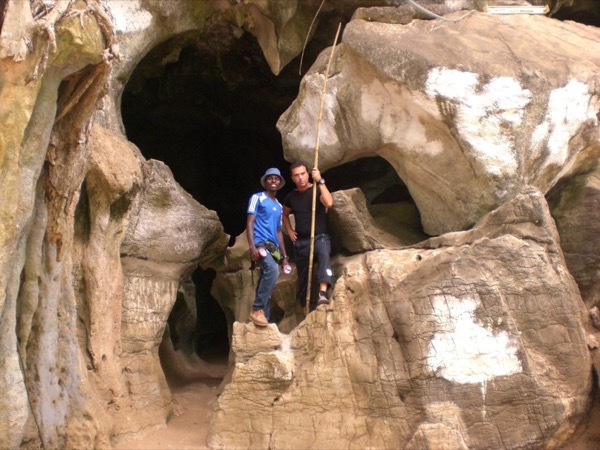Explore Tanzania’s Extensive Limestone Caves : Limestone Caves in Tanzania are in coastal regions and Oceanic Island. The caves form about 150 million during the Jurassic era. In all 150 million years, 20 million caves have been under the Indian Ocean water. The indigenous East African Tribal Communities used these caves as places of spiritual services (worship, praying) and conducting ritual practices. The caves were similar to mosques, churches, and temples of today. Here are the famous limestone Caves of Tanzania.

Amboni Cave
Amboni cave is the largest limestone cave in East Africa and the second limestone cave in the world after the mammoth Cave of the United States of America (USA). The Amboni caves are limestone in nature found in the Tanga region, Northern Tanzania. The background history of the Amboni caves tells how Tanga indigenous people among the tribes such as Zigua, Bondei, Digo, and Sambaa used the caves. These tribal communities used the cave for spiritual reasons. Today, the cave is used for tourist activities and for teaching students’ history and geography. The geologists estimate the caves to have existed for more than 150 million since the Jurassic era. The attractions of this cave include a dancing place, bats, and rocky drawings of the ship, mountain, crocodile, head of a male lion, elephant, and a map of Africa.
Kuza Cave
Kuza Cave is located a few hundred meters from the main road in Jambiani Ipaje, Zanzibar. The story of the Caves goes around 250,000 years, formed due to thousands of years of water erosion swift rate underground rivers and pools. Walking down the Cave at about a 50-meter sinkhole with crystal clear water attracts many people to visit. With its freshwater offering a swimming opportunity, you can also enjoy some music and drumming from local artists who also play in different local hotels. But this is not the only Cave in Zanzibar. There is Kumbi Cave at Jambiani Mfumbwi, located 4 kilometers from the main road. In Kumbi cave is where the archeological findings evidence human habitation for over 10,000 years. The structure of the Cave is composed of great holes, which gave its name Kumbi Cave which comes from a Swahili word. Therefore, ‘Kumbi’ is a Swahili word meaning ‘A great hall’ in English. If you like to explore limestone Caves, then these two places are perhaps something you would want to check out, Explore Tanzania’s Extensive Limestone Caves
Last but most importantly, the other caves in Tanzania are not limestone in origin but look more attractive. They include
Kondoa Rock-Paintng Cave
Kondoa Rock-Art Painting is in the central region of Dodoma, Tanzania. Dodoma is the capital of Tanzania and the center of official politics. The best place to visit in Dodoma is Kondoa Irangi, known in history for its rock paintings and much more.

The Kondoa Irangi Rock Paintings are a set of 150 to 400 decorated rock shelter walls o believed to be more than 50,00 years old. The paintings depict elongated people, animals, musical instruments, flowing rivers, and hunting scenes. To this day, the cave is for providing spiritual services to the Rangi Community and all the surrounding communities of Irangi.
In 2006, the Kondoa region became a UNESCO (United Nations Educational, Scientific and Cultural Organization) World Heritage Site due to its remarkable rock art collection. Kondoa Irangi rock art in present-day Tanzania features the cultural expressions of hunter-gatherers and pastoralists over 2,000 years.
Mumba Cave
Mumba cave is where the archeologist Ludwig Kohl-Larsen found artifacts, rock art, and burials. The cave is in Karatu-Arusha, Tanzania. It is a rich archeological site of Microlith technology used during the period of the middle stone and Last or Late stone age in East Africa.


